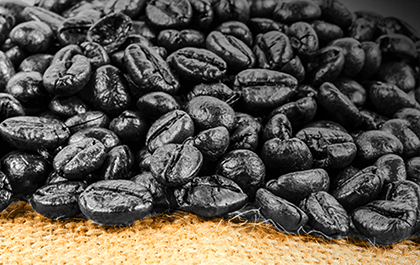Essential Steps for Cleaning Your Coffee Maker
A clean coffee maker is key to a great cup of coffee.
Yet, many of us overlook this crucial aspect of coffee brewing.
In this guide, we’ll walk you through the essential steps for cleaning your coffee maker.

Whether you’re wondering how to clean a Black and Decker coffee maker or seeking alternatives to vinegar, we’ve got you covered.
By the end of this article, you’ll have a clear understanding of how to maintain your coffee maker for optimal performance and longevity.
For high-quality coffee beans that match the care you put into cleaning your coffee maker, check out Capital City Coffee Roasters. They offer a variety of blends that will elevate your coffee experience.
So, let’s dive in and learn how to keep your coffee maker in top shape.
Why Clean Your Coffee Maker Regularly?
Cleaning your coffee maker is about more than just aesthetics.
Regular cleaning ensures optimal flavor in your coffee. Over time, mineral buildup can affect the taste and performance of your machine.
Moreover, a clean coffee maker lasts longer. Regular maintenance can prevent costly repairs or replacements down the line.
Lastly, a clean coffee maker is a healthier coffee maker. Mold and bacteria can grow in machines that aren’t cleaned regularly, posing potential health risks.
Preparing to Clean: Safety and Disassembly
Before you start cleaning, safety comes first. Always unplug your coffee maker to avoid any electrical accidents.
Next, disassemble your coffee maker. Remove any removable parts like the carafe and filter basket.
Remember to empty the coffee grounds. Dispose of them properly to avoid clogging your sink.
Lastly, read the manufacturer’s instructions. They often provide specific cleaning recommendations for your model.
Step-by-Step Guide: Cleaning with Vinegar
Cleaning your coffee maker with vinegar is a common method. It’s effective and uses items you likely have at home.
First, fill the water reservoir with a mixture of half vinegar and half water. This ratio is important for effective cleaning.

Next, start a brew cycle. Halfway through, turn off the coffee maker. This allows the vinegar solution to sit and clean.
After 30-60 minutes, finish the brew cycle. This flushes out the vinegar solution and any loosened mineral buildup.
Now, fill the reservoir with fresh water. Run a full brew cycle to rinse out any remaining vinegar.
Repeat the rinse cycle. This ensures no vinegar taste remains. Your coffee maker is now clean and ready for use.
How to Clean a Black and Decker Coffee Maker
Cleaning a Black and Decker coffee maker follows a similar process. However, there are some model-specific tips to consider.
First, remove and clean the carafe and filter basket. Use warm soapy water for this.

Next, fill the reservoir with the vinegar-water mixture. Run a half brew cycle, then pause for an hour.
Finally, complete the brew cycle. Rinse with fresh water, repeating the cycle until no vinegar smell remains. Your Black and Decker coffee maker is now clean and ready to brew.
Natural Alternatives: How to Clean Coffee Maker Without Vinegar
If you prefer not to use vinegar, there are natural alternatives. Lemon juice and baking soda are two popular options.
Lemon juice is acidic, like vinegar. It can effectively remove mineral buildup.

To clean with lemon juice, follow these steps:
- Mix equal parts lemon juice and water.
- Pour the mixture into the reservoir.
- Run a half brew cycle, then let the machine sit for an hour.
- Complete the brew cycle and rinse with fresh water.
Baking soda is another option. It’s a mild abrasive that can clean without scratching.
To use baking soda, make a paste with water. Apply it to stained areas, let it sit, then scrub and rinse.
Descaling Your Coffee Maker: Why It Matters
Descaling is a crucial part of coffee maker maintenance. It’s different from regular cleaning.
Descaling targets mineral buildup from hard water. This buildup can affect the taste of your coffee.
It can also hinder your machine’s performance. Over time, it may even damage your coffee maker.
So, don’t skip descaling. It’s as important as cleaning for the longevity of your machine and the quality of your coffee.
Cleaning Frequency and Maintenance Tips
How often should you clean your coffee maker? It depends on usage and water hardness.
For optimal performance, clean your coffee maker after every use. This includes the carafe, filter basket, and any removable parts.
A deep cleaning with vinegar or an alternative solution should be done monthly. If your water is hard, you might need to do it more often.
Remember, regular cleaning not only improves the taste of your coffee but also extends the life of your machine.
Troubleshooting Common Cleaning Issues
Sometimes, despite regular cleaning, issues may arise. For instance, your coffee maker might take longer to brew.
This could be due to mineral buildup. In such cases, descaling might be necessary.
If your coffee tastes off, check the water reservoir and hot plate. They might need a thorough cleaning.
Remember, if problems persist, consult your user manual or contact the manufacturer.
Final Rinse and Reassembly After Cleaning
After cleaning, it’s crucial to rinse your coffee maker thoroughly. This ensures no cleaning solution residue remains.
Use fresh water for the rinse cycle. Run it through the coffee maker as you would when brewing.
Once rinsed, let all parts dry completely. This prevents mold and bacteria growth.
Finally, reassemble your coffee maker. Make sure all parts are correctly placed. Now, your coffee maker is ready for the next brew.
Conclusion: The Benefits of a Clean Coffee Maker
A clean coffee maker is key to a great coffee experience. It ensures optimal flavor and extends the life of your appliance.
By following these cleaning steps, you’ll enjoy delicious coffee every time. Plus, you’ll save on potential repair or replacement costs. Happy brewing!


